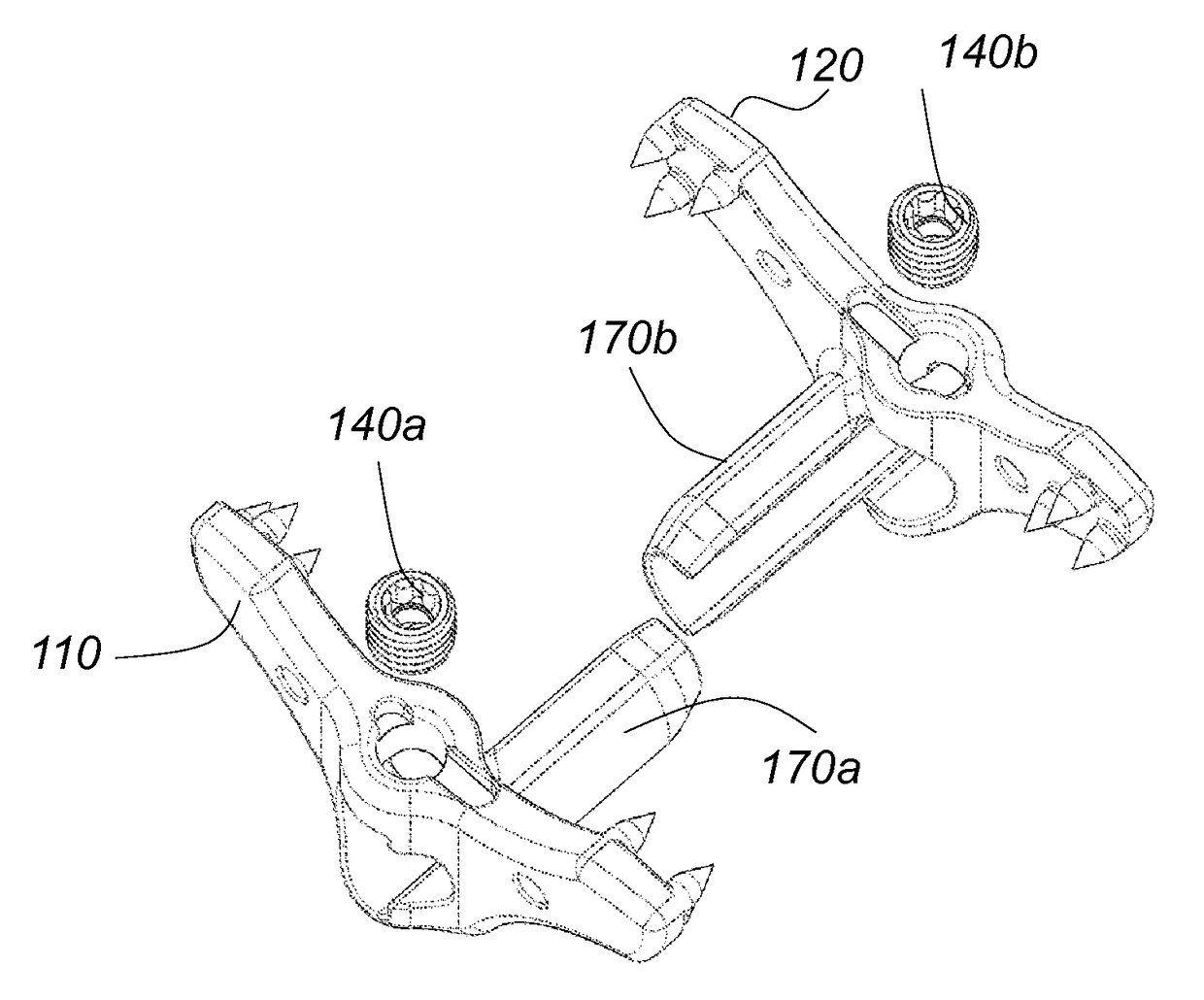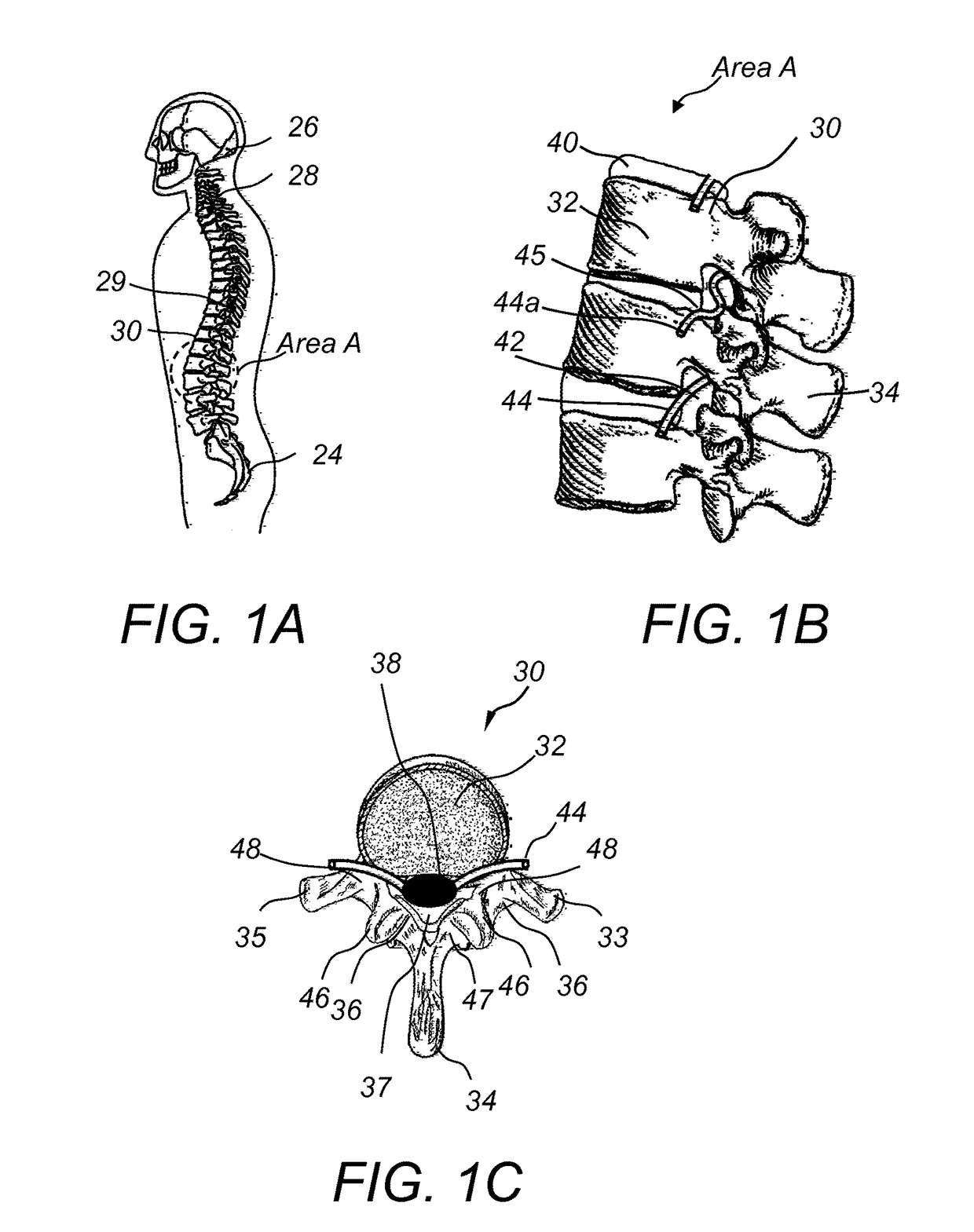Interspinous fixation implant
a technology of interspinous implants and fixation devices, which is applied in the field of system and a method of spinal stabilization through an interspinous implant, can solve the problems of limiting the access to the pars and transverse processes, affecting the stability of the spinal column, and the amount of blood loss, so as to promote bone growth through the device and stabilize the vertebra
- Summary
- Abstract
- Description
- Claims
- Application Information
AI Technical Summary
Benefits of technology
Problems solved by technology
Method used
Image
Examples
Embodiment Construction
[0074]The present invention relates to a system and a method for improved spinous process fixation implants. Implantable spinous process fixation devices include elongated first and second components that are arranged opposite and parallel to each other and are separated by a hub spacer. First and second spinous processes of first and second adjacent vertebras are clamped between the first and second components and are separated by the hub spacer that fits transversely through the interspinous ligament.
[0075]Referring to FIG. 2a-2e, spinous process fixation implant 100 includes first component 110, second component 120, top and bottom pins, 130a, 130b and set screws 140a, 142a, 142b. First component 110 includes an elongated body 112 and a cylindrical hub 114. Elongated body 112 has an essentially parallelepiped structure having parallel front and back surfaces 112a, 112b, parallel left and right side surfaces 112c, 112d and parallel top and bottom surfaces 112e, 112f, respectively....
PUM
 Login to View More
Login to View More Abstract
Description
Claims
Application Information
 Login to View More
Login to View More - R&D
- Intellectual Property
- Life Sciences
- Materials
- Tech Scout
- Unparalleled Data Quality
- Higher Quality Content
- 60% Fewer Hallucinations
Browse by: Latest US Patents, China's latest patents, Technical Efficacy Thesaurus, Application Domain, Technology Topic, Popular Technical Reports.
© 2025 PatSnap. All rights reserved.Legal|Privacy policy|Modern Slavery Act Transparency Statement|Sitemap|About US| Contact US: help@patsnap.com



